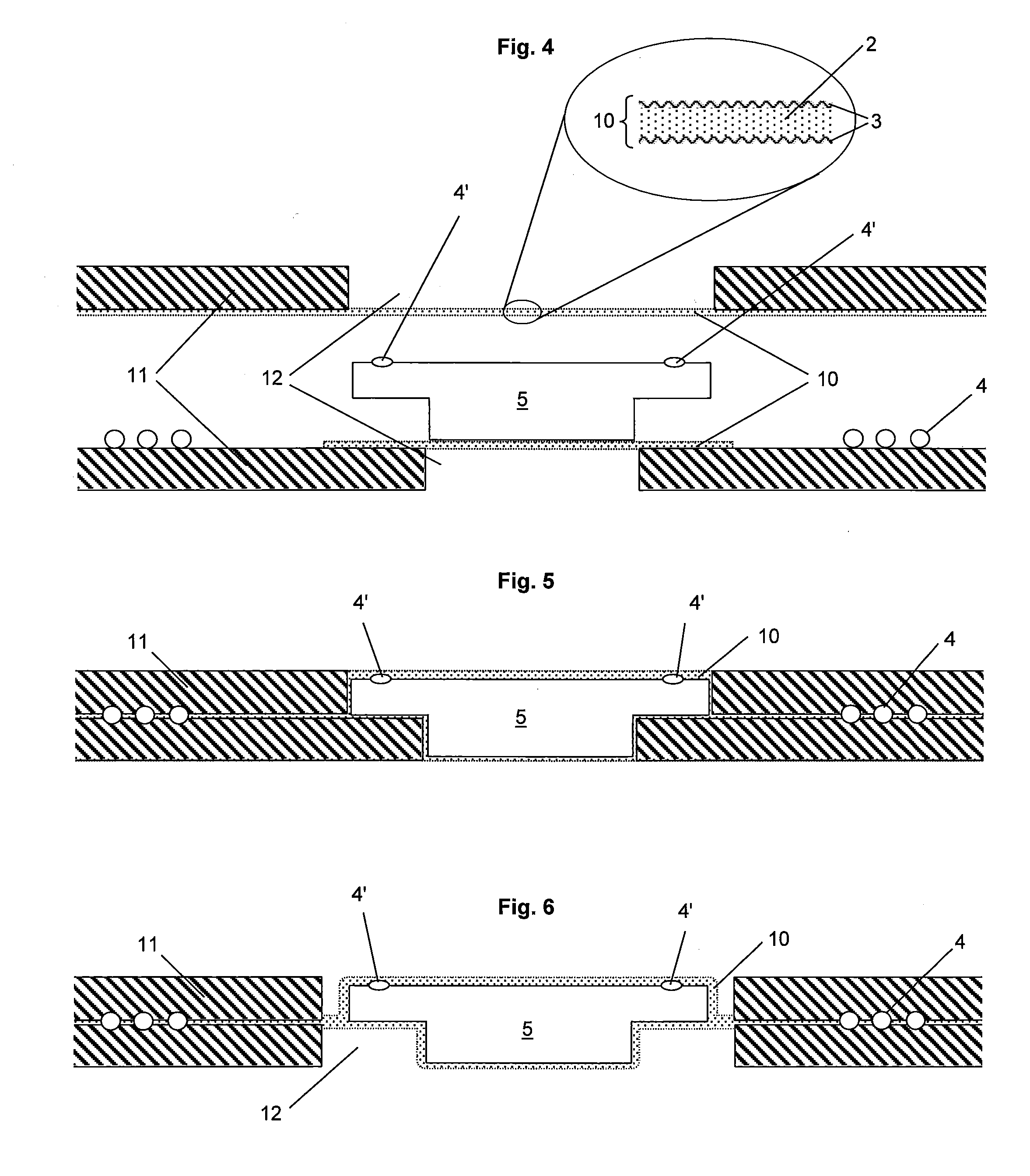Transponder embedded in a flexible multilayer support
a multi-layer support and transponder technology, applied in the field of contactless transponders embedded in flexible multi-layer supports, can solve the problems of insufficient surface and appearance quality to meet market requirements, thin or more flexible transponders, and at the cost of weakening their stress resistance and mechanical solidity, almost “evanescent” foils have been apparently considered as not reliable substrates for transponders, etc., to achieve easy penetration, less time and energy consumption, and easy lamination
- Summary
- Abstract
- Description
- Claims
- Application Information
AI Technical Summary
Benefits of technology
Problems solved by technology
Method used
Image
Examples
first embodiment
[0039]FIG. 1 shows the multi-layer laminate support 1 of the invention which comprises a chip module 5 to which an antenna coil 4 is connected by contact ends 4′, said chip module and antenna being placed between two thermoplastic layers 2. According to the invention, there is, in addition to the two thermoplastic layers 2, a further layer 3 which is a non-woven foil. This foil 3 is shown placed on top of the antenna 4 and module 5, but it can of course also be placed underneath said antenna 4 and module 5.
[0040]The non-woven substrate 3 is very thin, in particular in comparison to the antenna coil. It is made of non-woven long fibers put together in the form of a sheet and bonded, either mechanically, by thermal bonding, by chemical bonding (binder, adhesive), by hydro-entanglement, by needle felt, etc. In the present invention one envisages the use of a very thin and very porous type of non-woven sheet, presenting long fibers and small quantities of bonding material (if used). The...
second embodiment
[0048]In another variant, it is also possible to combine the first and second embodiment illustrated in FIGS. 1 and 2 and to use a first non-woven foil 3 placed between the two thermoplastic layers (as in FIG. 1) and a second non-woven foil placed over one (or two) thermoplastic layer(s).
[0049]FIG. 3 illustrates a further embodiment of the present invention, where two non-woven foils 3 are placed between the two thermoplastic layers 2, one foil on each side of the module 5 and antenna 4. In this embodiment, as in the one illustrated in FIG. 2, the antenna 4 and the chip 5 are placed on a core layer 6.
[0050]Any combination of the illustrative embodiments of FIGS. 1 to 3 can of course be envisaged with the addition of a foil of non-woven material in any a designated position.
[0051]FIG. 4 shows another embodiment of the transponder according to the present invention. In this embodiment, the non-woven foil 3 and the soft thermoplastic layer 2 are combined to form an embedding patch 10. ...
PUM
| Property | Measurement | Unit |
|---|---|---|
| Thickness | aaaaa | aaaaa |
| Diameter | aaaaa | aaaaa |
| Flexibility | aaaaa | aaaaa |
Abstract
Description
Claims
Application Information
 Login to View More
Login to View More - R&D
- Intellectual Property
- Life Sciences
- Materials
- Tech Scout
- Unparalleled Data Quality
- Higher Quality Content
- 60% Fewer Hallucinations
Browse by: Latest US Patents, China's latest patents, Technical Efficacy Thesaurus, Application Domain, Technology Topic, Popular Technical Reports.
© 2025 PatSnap. All rights reserved.Legal|Privacy policy|Modern Slavery Act Transparency Statement|Sitemap|About US| Contact US: help@patsnap.com



